At first glance, dendritic opal and dendritic agate might seem similar because of their unique tree-like or fern-like patterns. However, if you dig a bit deeper, you’ll find both striking differences and surprising similarities between the two.
As we compare dendritic opal vs dendritic agate, you’ll discover that while they share some fun similarities, they also have unique features that make each one special.
They have differences in color, clarity, and even price. However, their similarities are also notable, making them both beloved in jewelry and collections. It’s this blend of differences and likenesses that makes comparing these stones so captivating.
Dendritic Opal vs Dendritic Agate – The Major Differences
Dendritic opal and dendritic agate might look pretty similar because of their tree-like patterns. However, they’re actually quite different in many ways.
Colors – Dendritic agate tends to have a white or gray base
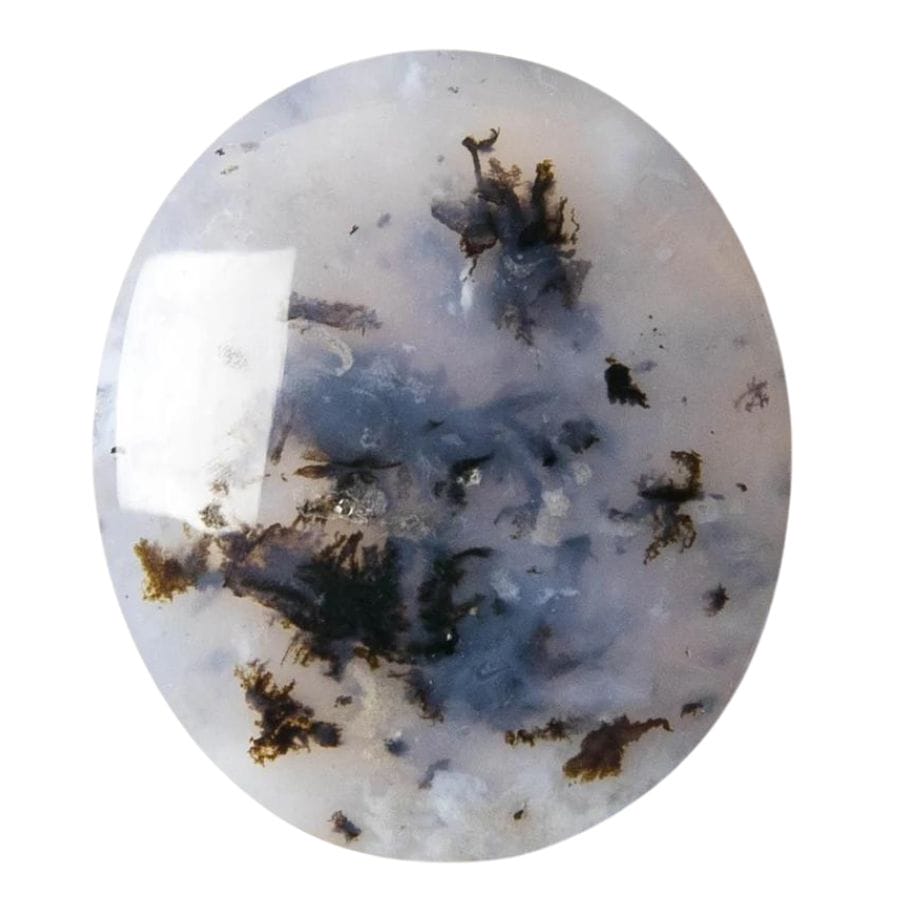
Dendritic opal has a range of base colors. It can be white, which is pretty common, but it can also be pink, blue, or green. These colors make the stone look really special.
On top of these base colors, dendritic opal has patterns that look like dark trees or branches.
On the other hand, dendritic agate is a bit different in color. It usually has a background that’s white to gray. Just like dendritic opal, dendritic agate also has dark tree-like patterns that contrast nicely with the lighter background.
Luster – Dendritic opal shines like the surface of a candle
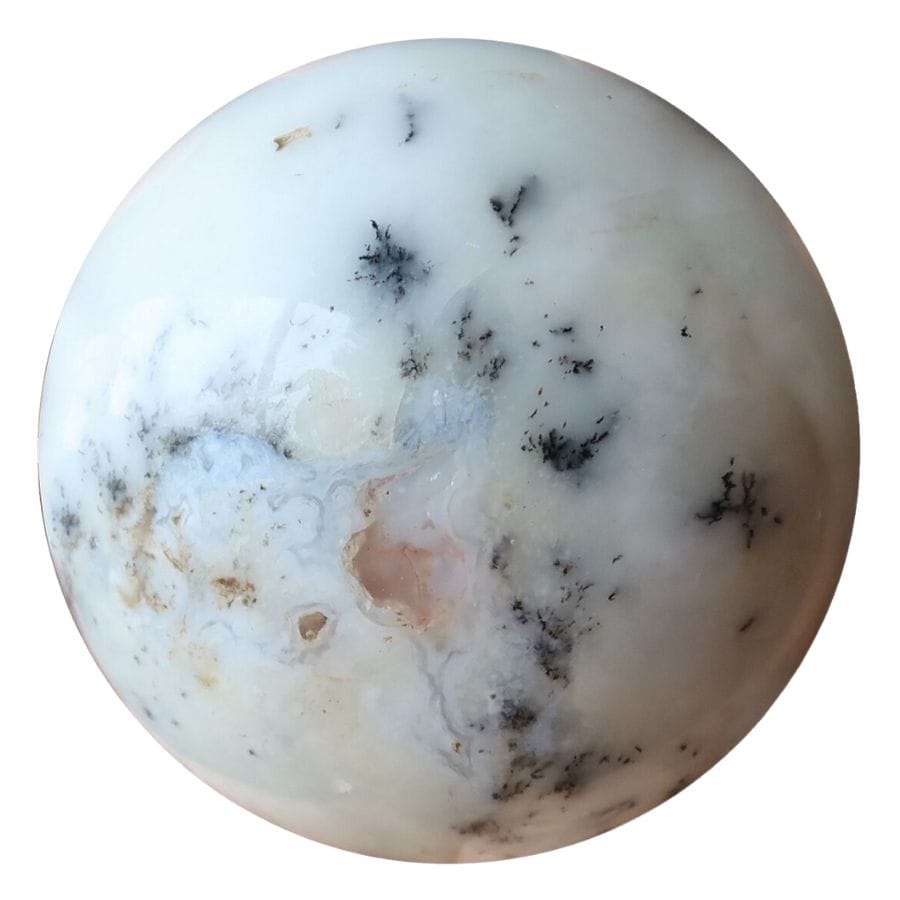
Luster is a word we use to describe how light reflects off a surface, especially in minerals and gemstones. Think about how some things shine really brightly, like a freshly cleaned window, while others might have a softer shine, like a candle.
That shine is what we’re talking about when we mention luster.
Dendritic opal can have what we call a waxy luster. This means it has a shine similar to a wax candle. But it can also have a vitreous luster, which means that it shines like glass.
Dendritic agate, on the other hand, always has a vitreous luster. It shines just like glass, bright and clear.
Crystal structure – Dendritic agate has an orderly crystal structure
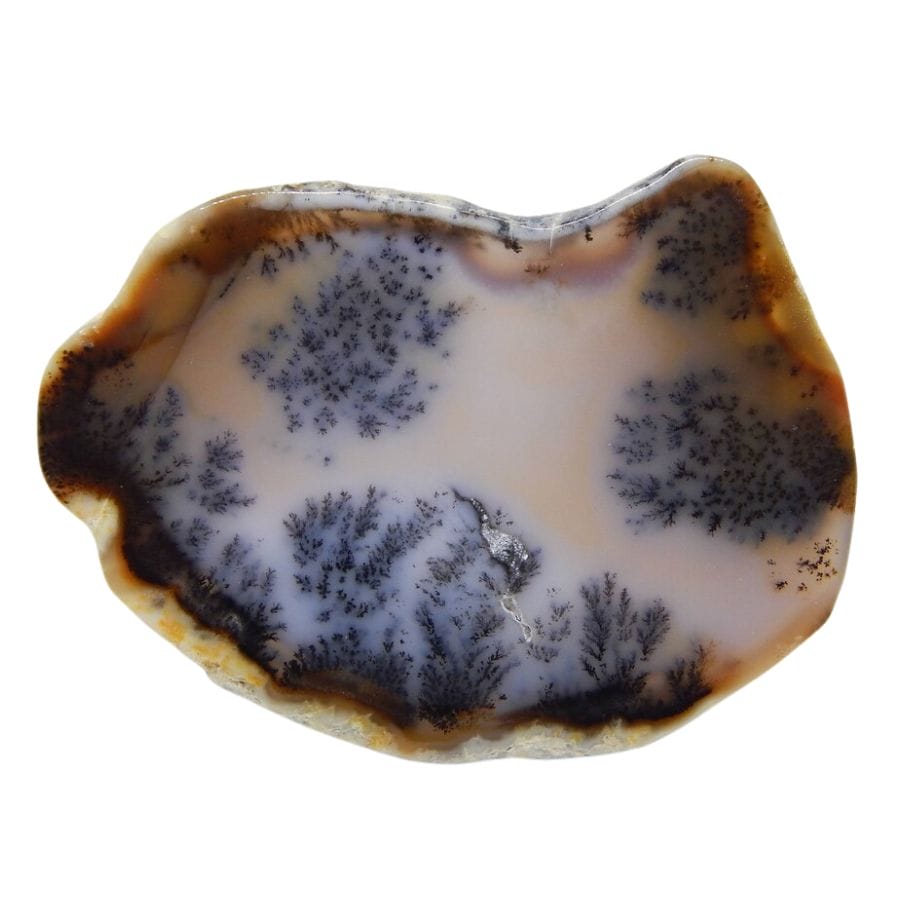
Crystal structure is kind of like the building blocks of a mineral or gemstone. Imagine if you had a box of toy blocks. Some blocks might fit together in a clear pattern, like a grid. Others might just be all mixed up with no clear order.
That’s what we mean when we talk about crystal structure: how the tiny parts of a mineral or gem fit together.
Dendritic opal’s crystal structure is called “amorphous.” This means it doesn’t have a regular repeating pattern. Its building blocks all jumbled up without a clear order. They don’t form neat rows or patterns.
On the other hand, we have dendritic agate. This stone is a type of chalcedony, and its structure is made up of super tiny crystals all packed together. It’s more ordered than the jumbled-up structure of dendritic opal.
Chemical composition – Dendritic opal contains water
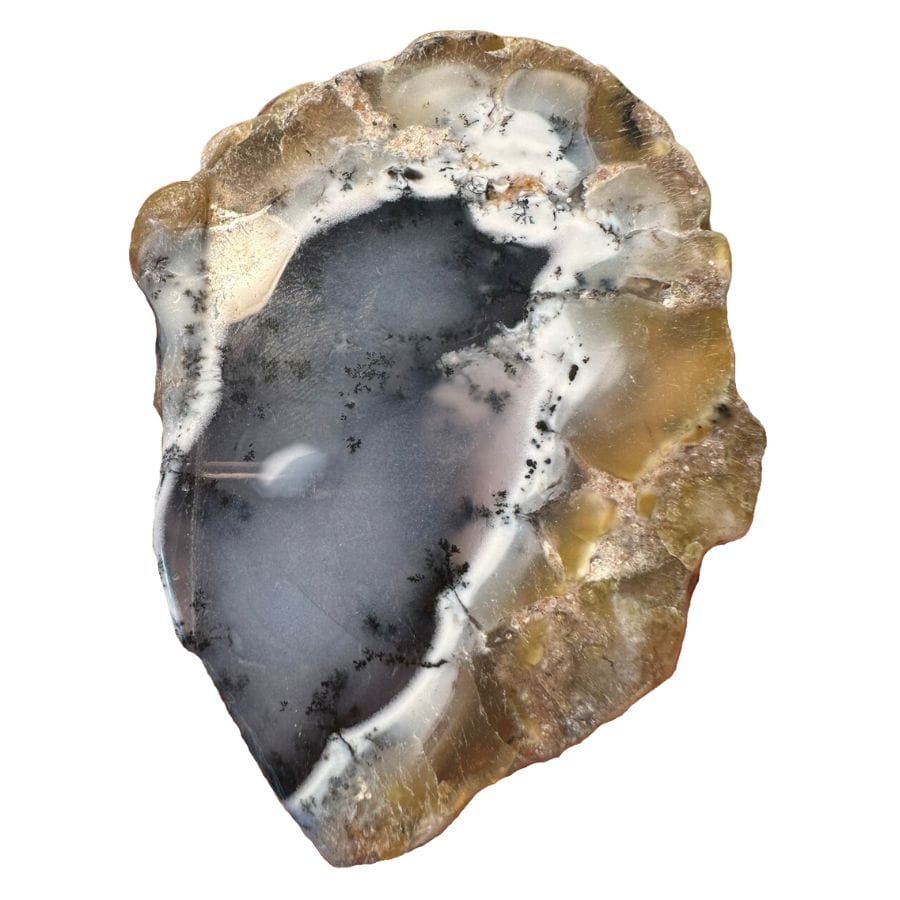
Every rock or gemstone is made up of different materials or elements, and this mix of elements is called its chemical composition. It’s like a recipe for a cake; different cakes have different ingredients.
Dendritic opal has its own unique recipe. Its primary ingredient is hydrated silica. This means it has silicon dioxide and water mixed together.
But that’s not all! Dendritic opal also has tiny amounts of other elements like iron and manganese. These elements make the cool tree-like patterns inside the stone.
Dendritic agate has a slightly different mix. Its main ingredient is silicon dioxide, but it doesn’t have the added water like dendritic opal.
Just like dendritic opal, though, it has those small bits of iron and manganese which create the dendrites in the stone.
Density – Dendritic agate feels heavier
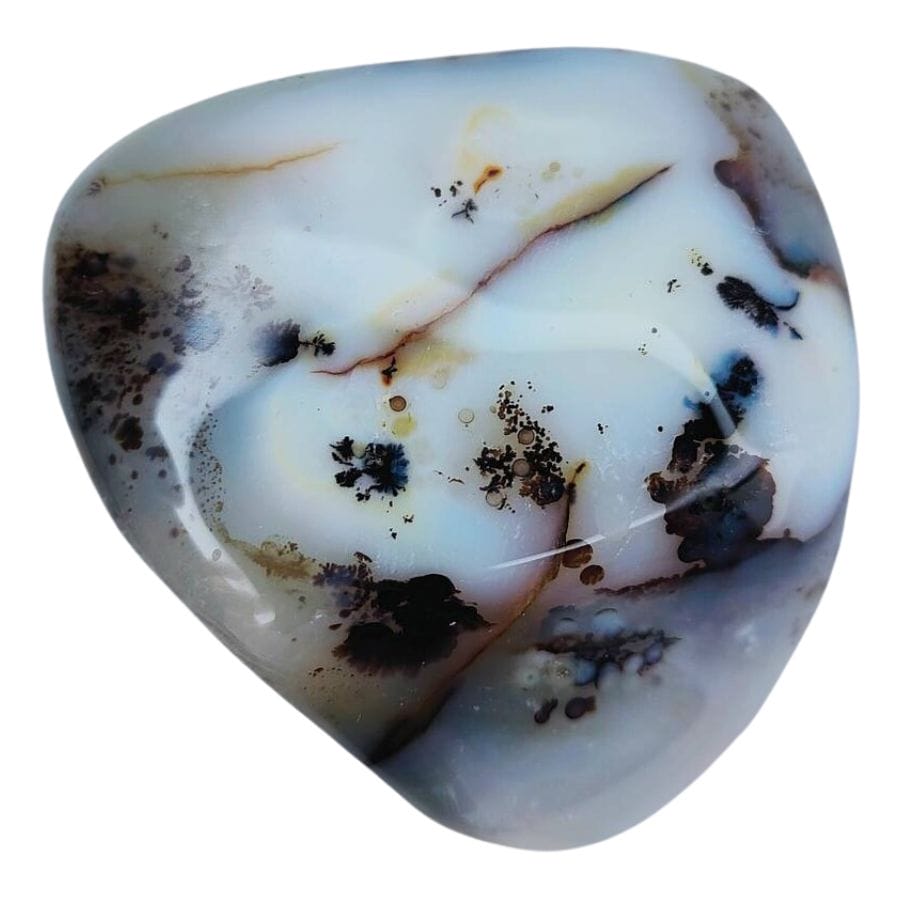
Imagine you have two boxes of the same size, one filled with feathers and the other with sand. Even though they’re in the same-sized boxes, the box with sand will be much heavier because sand particles are packed more tightly than feathers.
That’s the idea behind density: it tells us how tightly packed the material is in a certain space. We measure it in grams per cubic centimeter or g/cm³.
Sometimes, a difference in density can help us distinguish dendritic agate vs dendritic opal. Dendritic opal has a density of about 2.09 g/cm³.
Dendritic agate, however, is a bit denser. Its density is between 2.58 to 2.64 g/cm³. So, if you had a piece dendritic agate, it would weigh a little more than a piece of dendritic agate of the same size.
Price – Dendritic opal tends to be less expensive
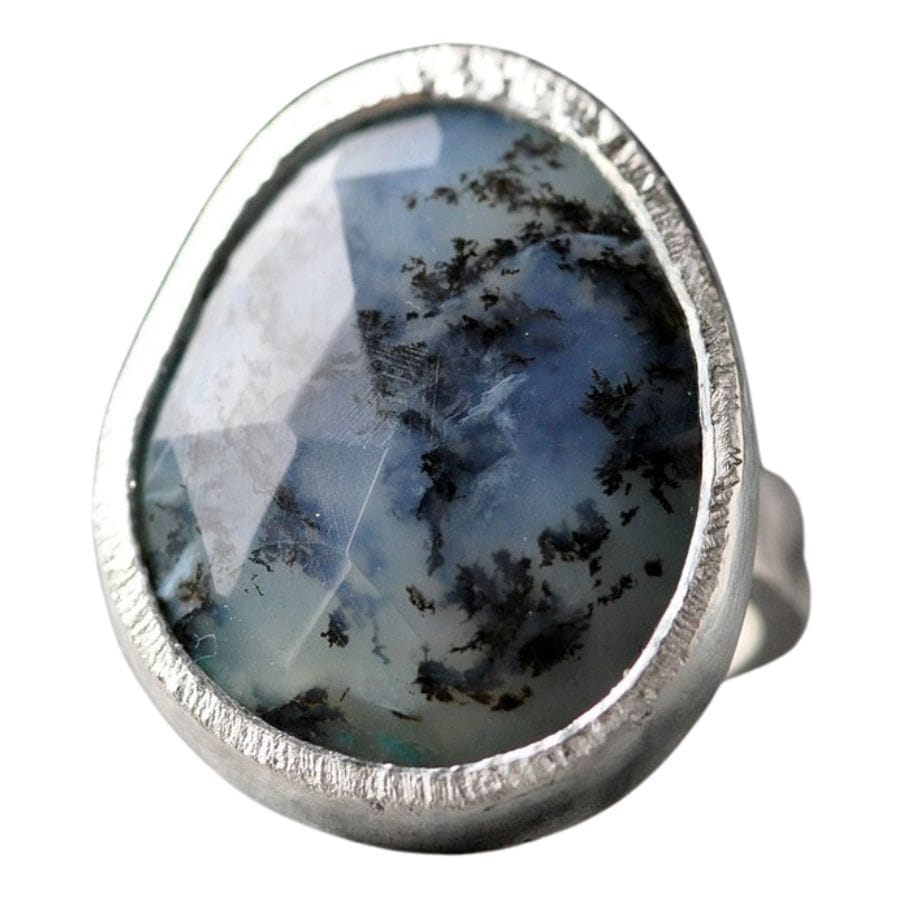
The price of gemstones is determined by a few things. These can include rarity, size, clarity, and even the color of the stone. Sometimes, the way the stone is used, like in a piece of jewelry, can also make it cost more.
Dendritic opal and dendritic agate have different price points. Dendritic opal is usually less costly than dendritic agate. But, there are times when dendritic opal can be more expensive.
For example, if the opal has rare colors like blue or pink, its price might go up. Also, larger pieces of dendritic opal can have a higher price tag. If the opal is used in jewelry, that can also make it cost more, especially if it’s a special color.
On the other hand, the price of dendritic agate when it’s clear or see-through is typically higher. However, if the dendritic agate is more cloudy or opaque, its price is usually similar to the cost of an opaque piece of dendritic opal.
Location – Dendritic agate is usually found in Brazil
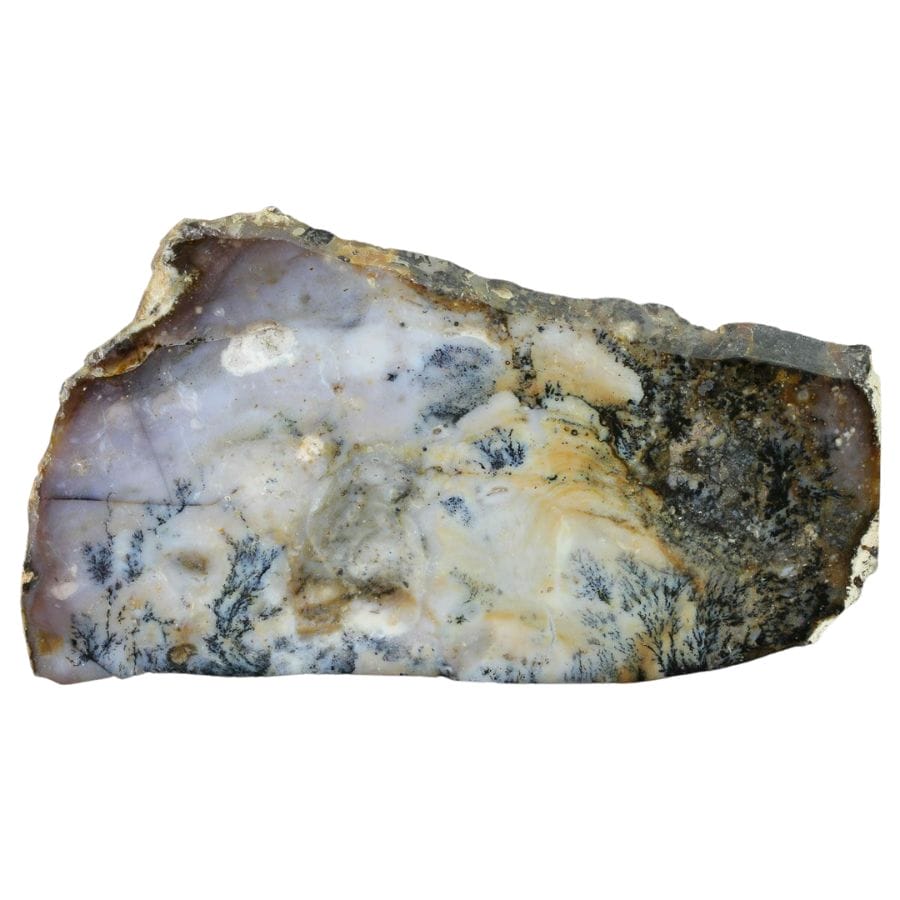
Dendritic agate is mostly found in Brazil, India, and Mexico. These places have the right conditions in the ground to form this beautiful stone.
On the other hand, dendritic opal mainly comes from Australia, Mexico, and the USA. So, if you have a dendritic opal, it might be from the wild outback of Australia, the same Mexico that gives us dendritic agate, or maybe even from somewhere in the USA.
If you’re wondering where to find crystals, you can start in these places where dendritic opal and dendritic agate can be found.
Dendritic Agate vs Dendritic Opal – The Similarities
Dendritic opal and dendritic agate have a lot of things that set them apart, despite looking alike. However, their similarities are more than skin-deep.
Appearance – Both dendritic opal and dendritic agate have tree-like patterns
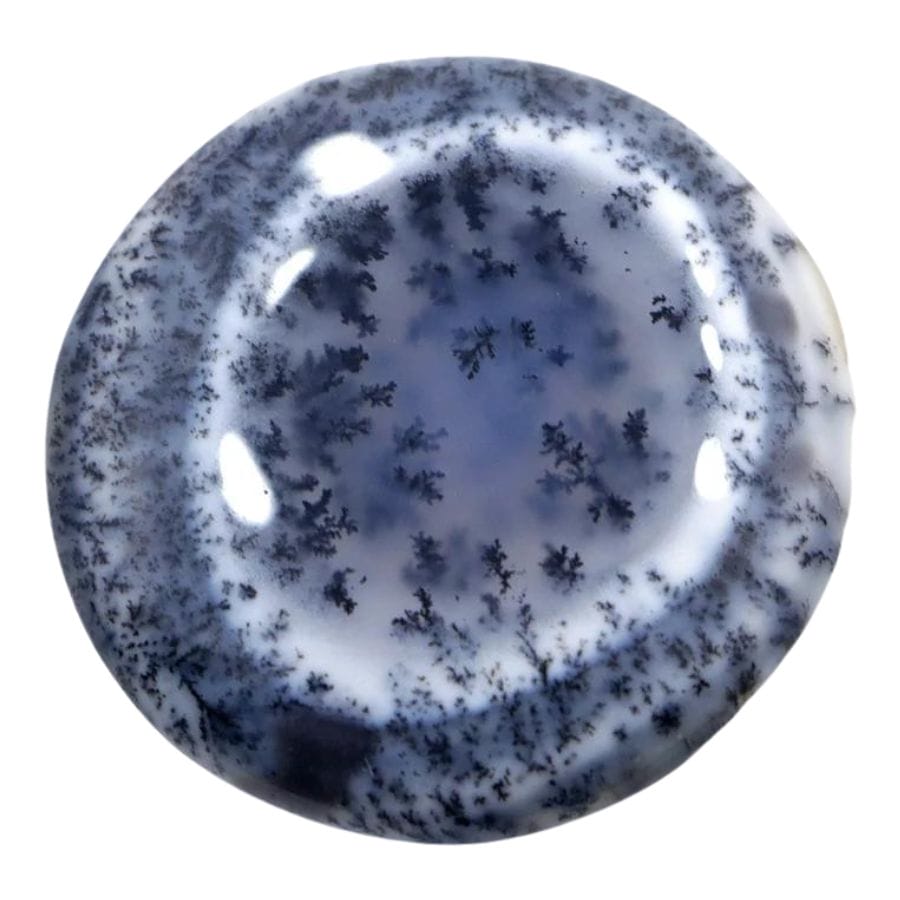
Both dendritic opal and dendritic agate have a special feature that makes them stand out: dendrites. Dendrites are tree-like patterns or designs that you can see inside the stones.
They kind of look like tiny branches or plant shapes, and they’re often dark, contrasting with the lighter color of the stone.
Dendrites form when minerals, like manganese or iron, get trapped inside the stone as it’s growing. Over time, these minerals naturally spread out, creating those branch-like patterns.
The word “dendrite” is from the Greek word for “tree.” So, when you think of dendritic opal or dendritic agate, just remember they got their name because of those cool tree-like designs inside them.
Streak – The two gemstones leave a white streak
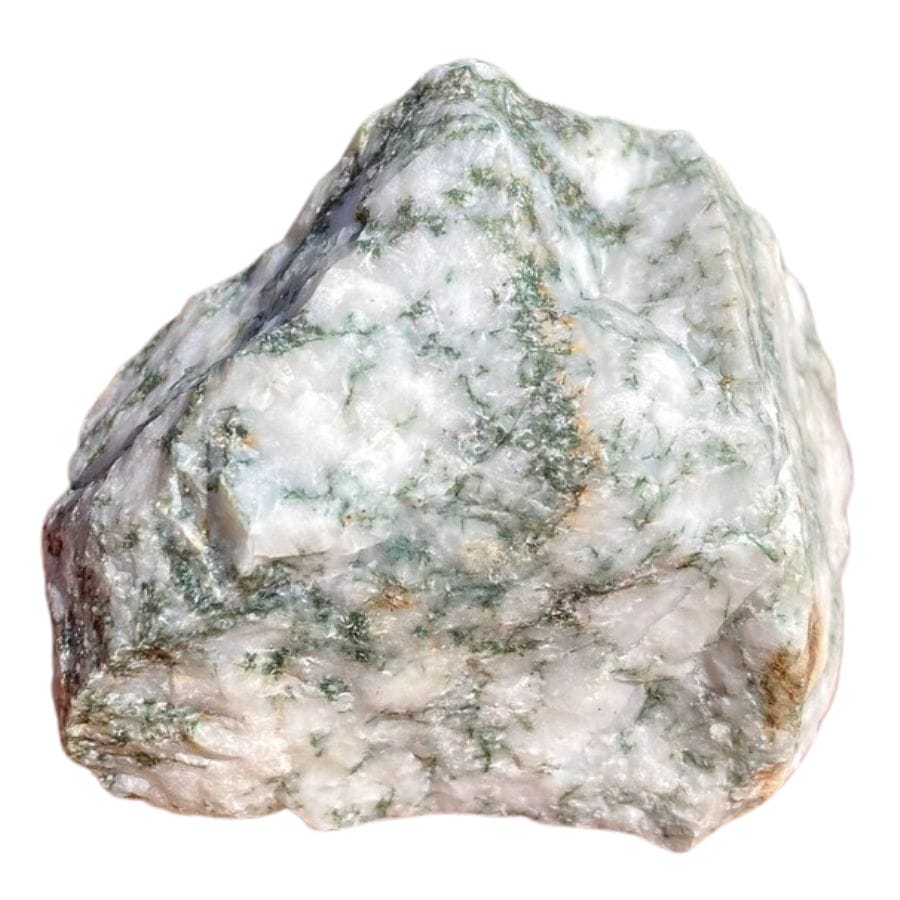
Streak is the color of the powder a mineral leaves behind when it’s rubbed against a rough surface, like a piece of white tile. So, even if a mineral is blue or green, its streak might be a totally different color.
The streak test helps scientists and gemstone lovers identify different stones. To see the color of a mineral’s streak, you’ll need to rub it against an unglazed porcelain tile called a streak plate.
Both dendritic opal and dendritic agate leave a white streak. Even though these two gemstones have their own unique colors and patterns, their streaks are the same.
Clarity – Dendritic agate and dendritic opal range from translucent to opaque
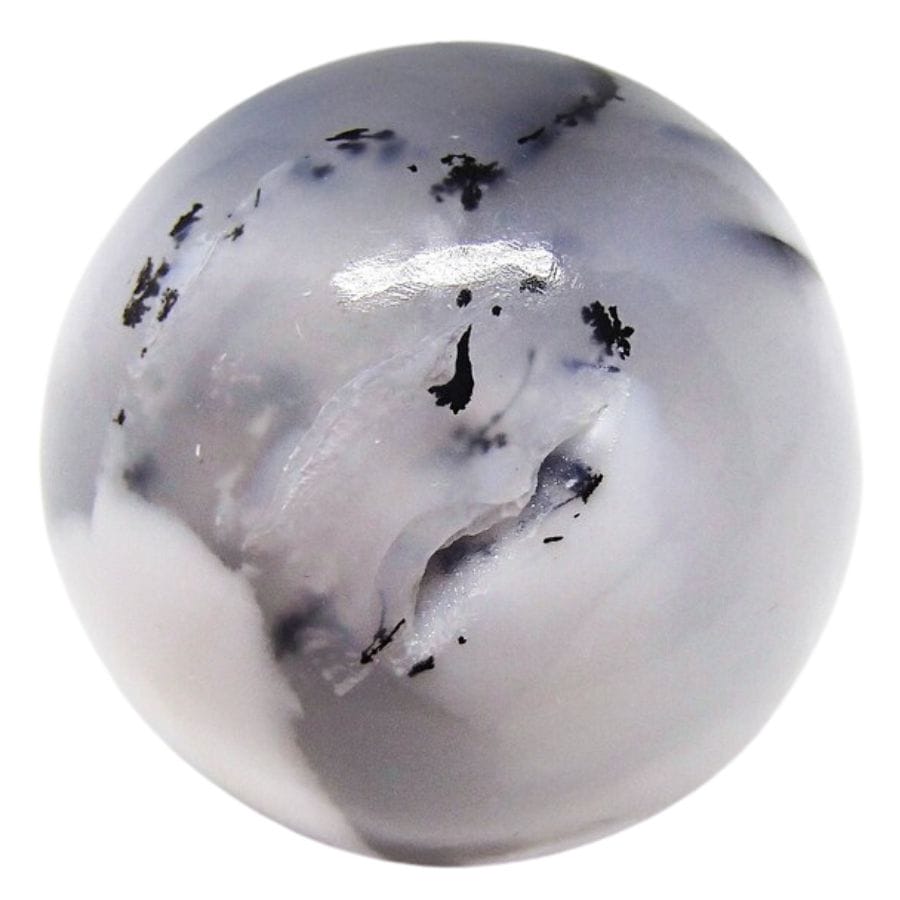
Imagine a piece of glass. If it’s super clean, you can see right through it. That’s what we’d call transparent. If it’s a little foggy or blurry but you can still see some light or shapes through it, that’s translucent.
Now, if it’s completely cloudy and you can’t see through it at all, it’s opaque.
Dendritic opal and dendritic agate have similarities in clarity. Dendritic opal can be opaque, which means you can’t see through it, or it can be translucent, which means you might see a little light or blurry shapes through it.
What makes the opal’s clarity change is its makeup and any extra bits inside, which are called inclusions.
Dendritic agate is pretty similar. It’s usually somewhere between opaque and translucent too.
So, even though these two stones have different colors and patterns, the way you can (or can’t) see through them is pretty much the same!
Hardness – Both stones have a similar hardness
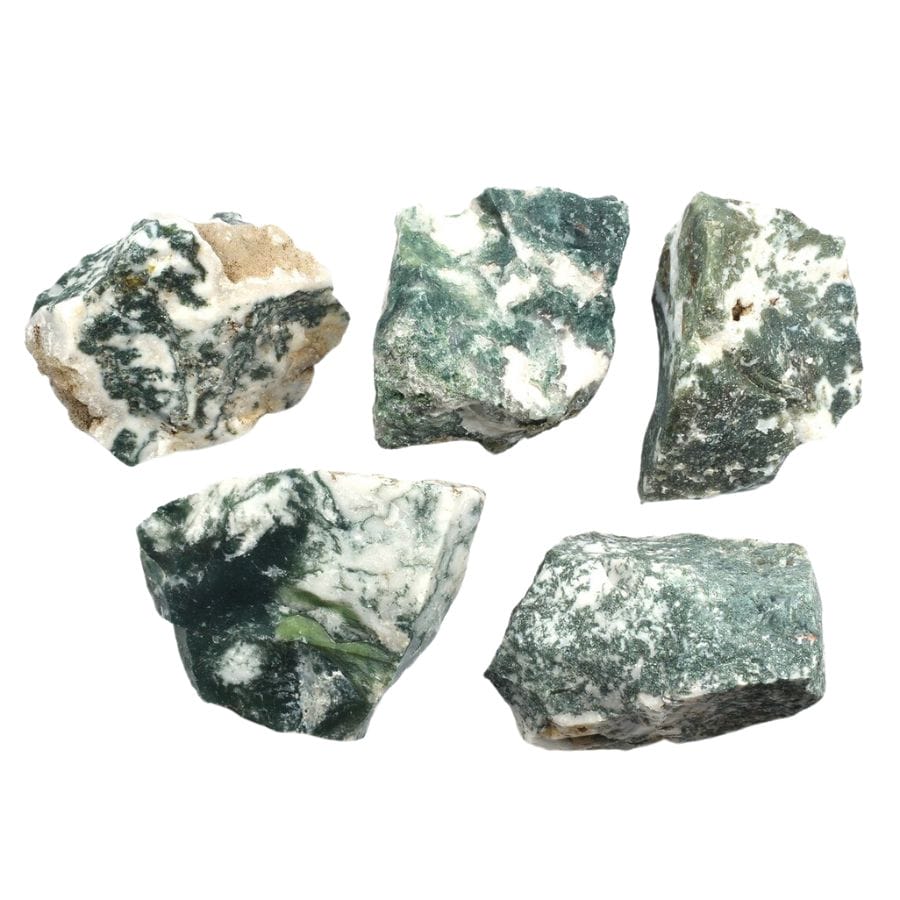
Hardness in rocks and minerals is like a measure of their toughness. Think of it as a test to see how easily a mineral can be scratched. We use something called the Mohs hardness scale to measure this.
The scale goes from 1 (really soft) to 10 (super hard). For example, talc, which is in baby powder, is a 1 because it’s really soft. Diamond, on the other hand, is a 10 because it’s one of the hardest things we know!
Dendritic opal has a hardness that falls between 5 and 6.5 on the Mohs scale. This means it’s somewhere in the middle in terms of toughness. It’s harder than a penny but softer than a piece of quartz.
Dendritic agate is a bit harder. It ranges from 6.5 to 7 on the Mohs scale. So, it’s just a touch harder than the opal, and its hardness is in a similar range.
Cleavage – Dendritic opal and dendritic agate both don’t break in smooth planes
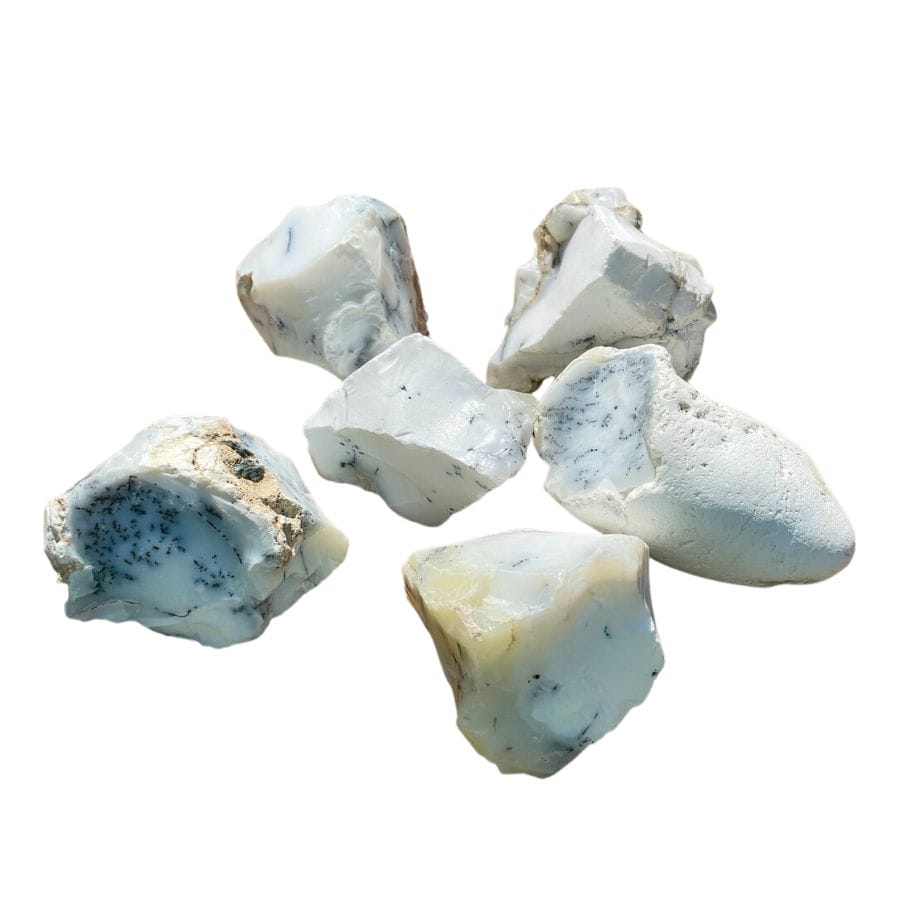
Cleavage is how a mineral breaks along smooth, flat surfaces. Imagine breaking a chocolate bar along those straight lines – that’s kind of like cleavage in minerals.
Fracture, on the other hand, is how a mineral breaks when it doesn’t have cleavage. It can break in all sorts of ways, including a conchoidal fracture. With this type of fracture, the break looks sort of like the inside of a seashell.
Now, if we compare dendritic opal vs dendritic agate in terms of cleavage and fracture, they’re pretty similar. Both of these stones don’t have cleavage. That means they don’t break in those smooth, flat planes.
Instead, they both have a conchoidal fracture. So, if you were to break them, both stones would have that seashell-like pattern.
Formation – Each stone forms in cracks and crevices of rocks
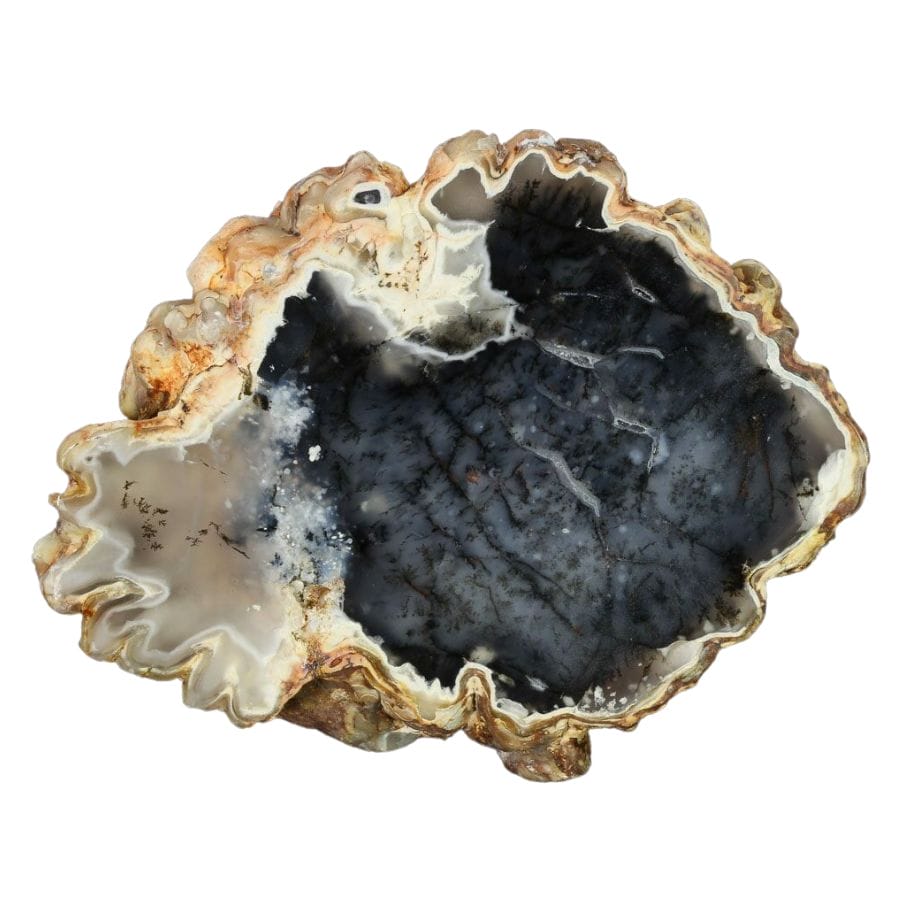
Both dendritic opal and dendritic agate naturally form in really cool ways. Dendritic opal is made when rocks go through a process called acidic weathering. This means that over time, things like rain and air change the rock and break it down.
Sometimes, special liquids filled with silica, a kind of material, move into the cracks of rocks. These liquids also have tiny bits of minerals like manganese and iron. As these liquids flow through the rock, the dendritic opal starts to form.
Similarly, dendritic agate grows inside the empty spaces of other rocks. Water that has a lot of silica in it fills these empty spaces. Over a really long time, like thousands of years, this silica-rich water slowly turns into the stone we know.
If there’s manganese or iron in the mix, and everything is just right, we get the special patterns in dendritic agate.
The types of rocks where dendritic opal and dendritic agate form can give clues about where to start searching. If you want to explore and maybe find these gemstones yourself, you can use our guide for rockhounding near you.
Magnetism – Neither dendritic agate nor dendritic opal is magnetic
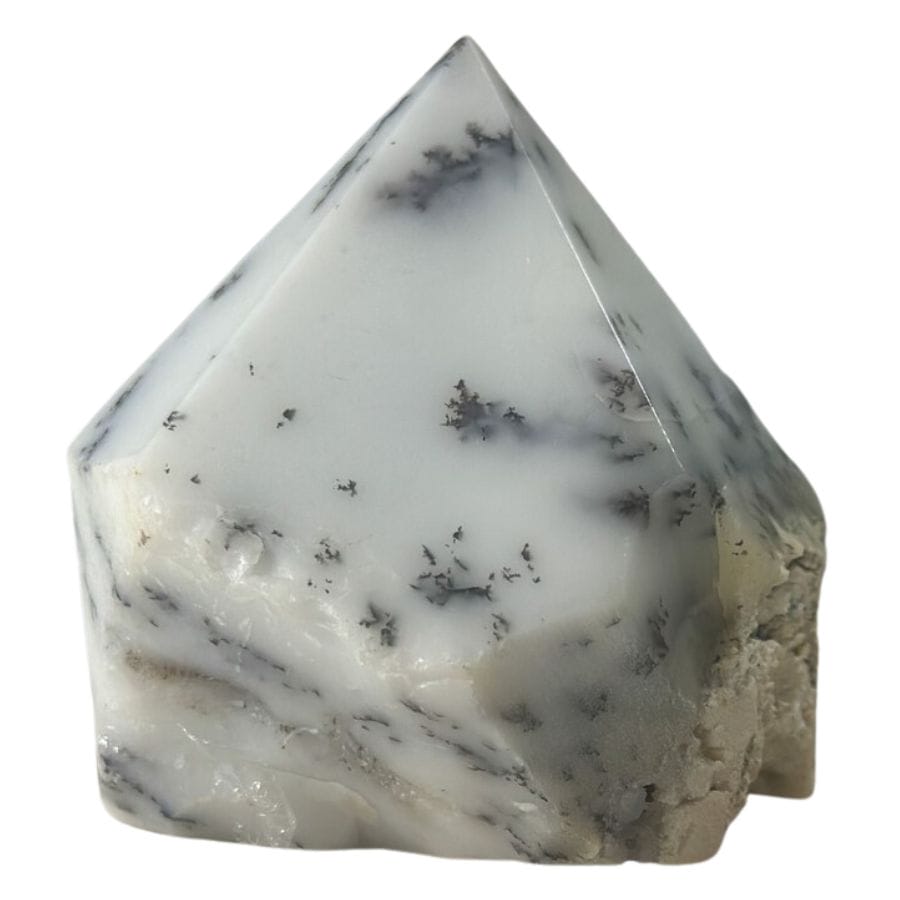
Magnetism is a force that pulls certain things towards it. You might have played with magnets and seen how they can stick to the fridge or attract some metal objects.
Some rocks and minerals are magnetic, meaning they’re attracted to magnets, and some are not.
Both dendritic opal and dendritic agate have something in common when it comes to magnetism: they aren’t magnetic at all. If you had a magnet and tried to make it stick to dendritic opal, it wouldn’t work. The same goes for dendritic agate.
Fluorescence – Both minerals can glow under UV light
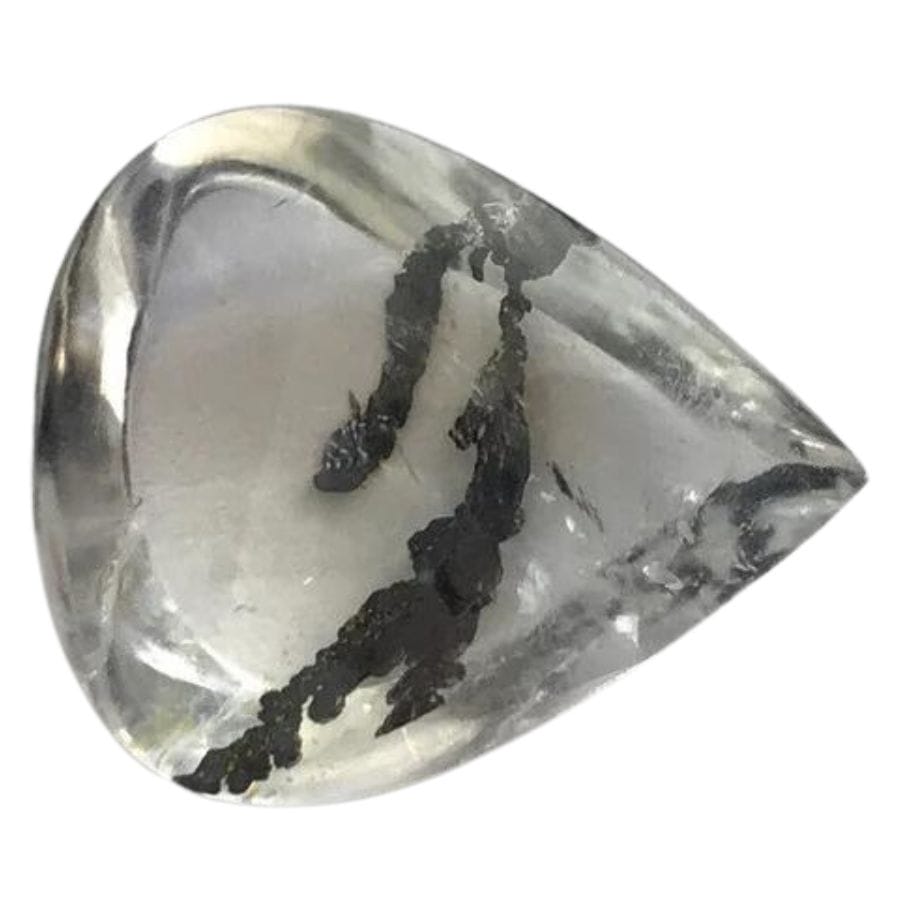
When ricks and minerals are exposed to certain types of light, like ultraviolet (UV) light, they can glow in the dark! This glowing effect is what we call fluorescence.
Both dendritic opal and dendritic agate have this neat ability. This means if you had a UV light and shone it on dendritic opal, it could start to glow. The same goes for dendritic agate.
Conductivity – Dendritic opal doesn’t conduct electricity, and neither does dendritic agate
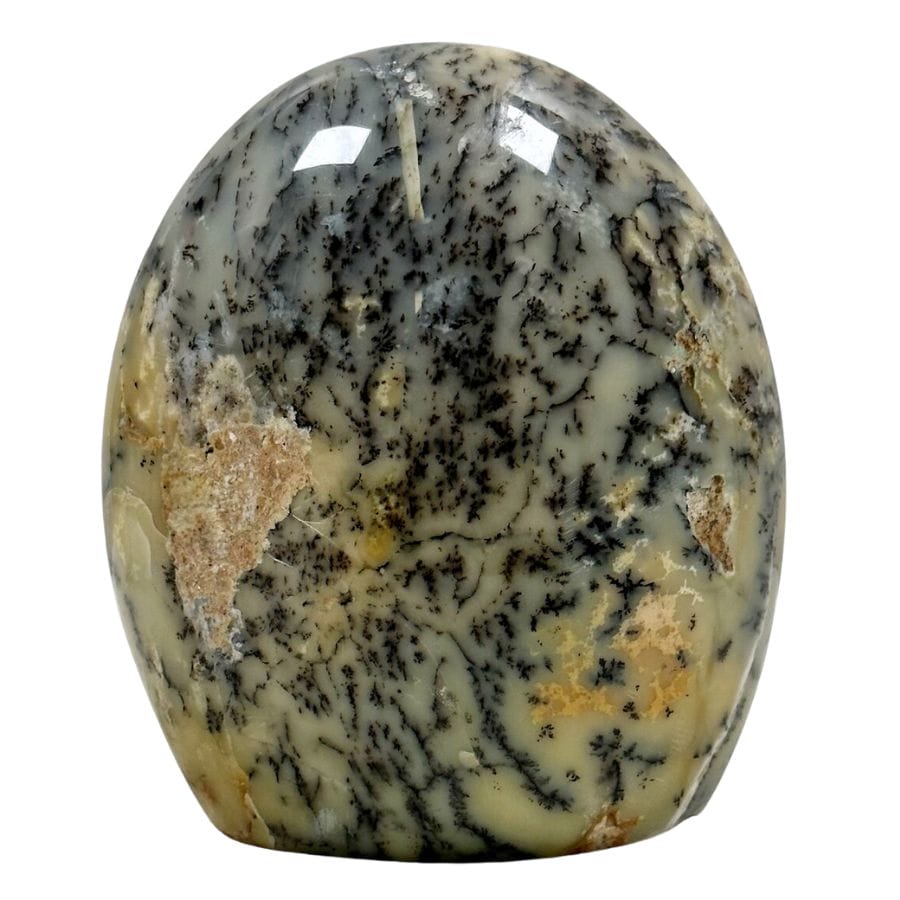
Conductivity describes how well something can carry or pass along electricity. Think of it like a train track. Some tracks are smooth and allow trains to zip by quickly, while others might be bumpy or broken, slowing the trains down.
Things that allow electricity to pass through them easily, like metals, are called good conductors. Things that don’t allow electricity to pass through them well are called poor conductors or insulators.
Both dendritic opal and dendritic agate are poor conductors of electricity. This means they don’t let electricity flow through them very well.
The Easiest Ways to Tell Dendritic Opal and Dendritic Agate Apart
Dendritic opal and dendritic agate have unique characteristics that set them apart. Knowing these differences can help you identify each stone with confidence. We’re about to dive into how you can tell these two stones apart.
Look at the base color
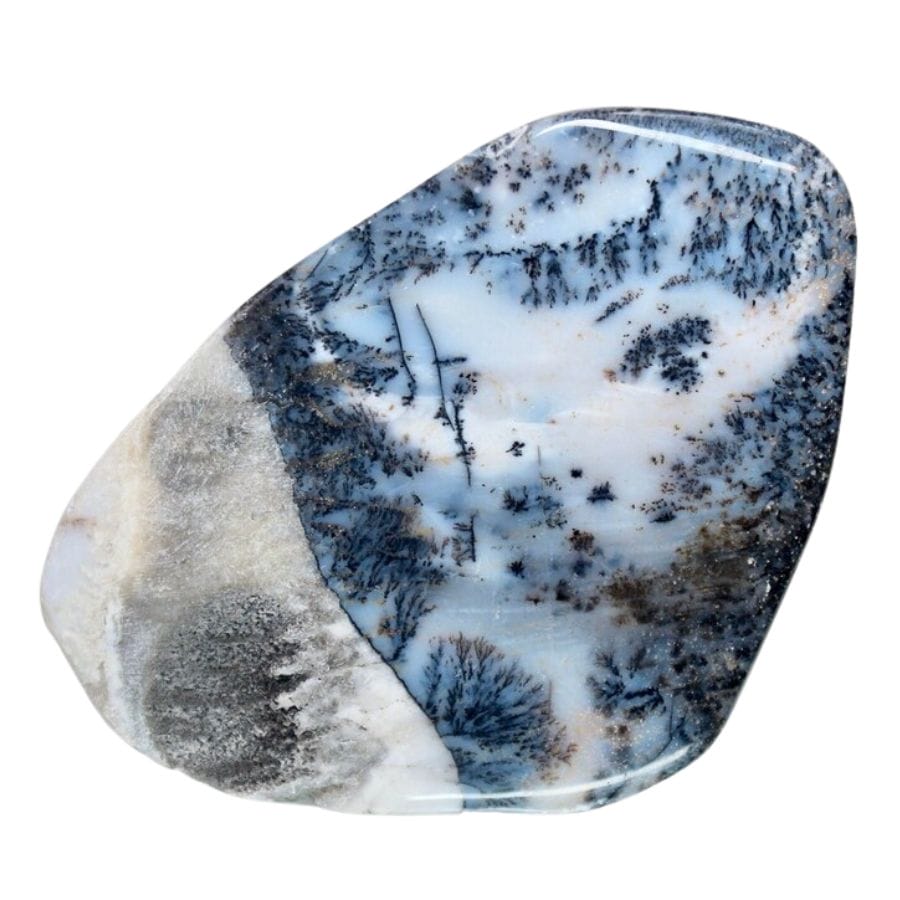
One of the easiest ways to spot the difference between dendritic opal and dendritic agate is by looking at their base colors. The base color is like the main background color you see before noticing any patterns or other details.
Dendritic opal has a variety of base colors. It can be white, which is common, but it can also have other exciting colors like pink, blue, or even green.
So, if you’re looking at a stone with a pink, blue, or green background, there’s a good chance that it’s dendritic opal.
Dendritic agate is a bit different. Its base color is usually somewhere between white and gray, with some pieces having a yellow tint. So, it doesn’t have those hints of blue or pink like dendritic opal does.
Check the shine
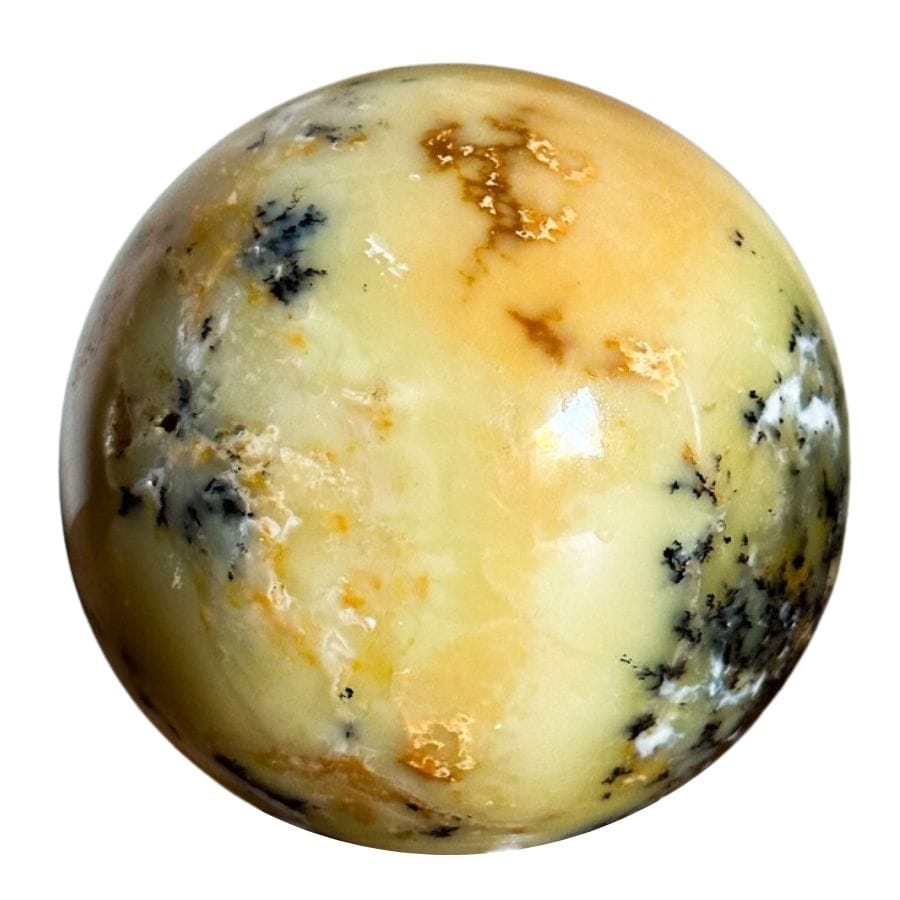
Different stones have different types of luster, and this can be a big clue to help tell them apart.
Dendritic opal has a waxy luster, similar to how a candle might look when light shines on it. If you hold a piece of dendritic opal in your hand and tilt it back and forth, it might remind you of the soft, smooth surface of a candle.
Meanwhile, dendritic agate has a vitreous luster. This just means it shines like glass. If you’ve ever seen sunlight catch a window or a shiny glass ornament, that’s the kind of shine dendritic agate has.
Test the translucency
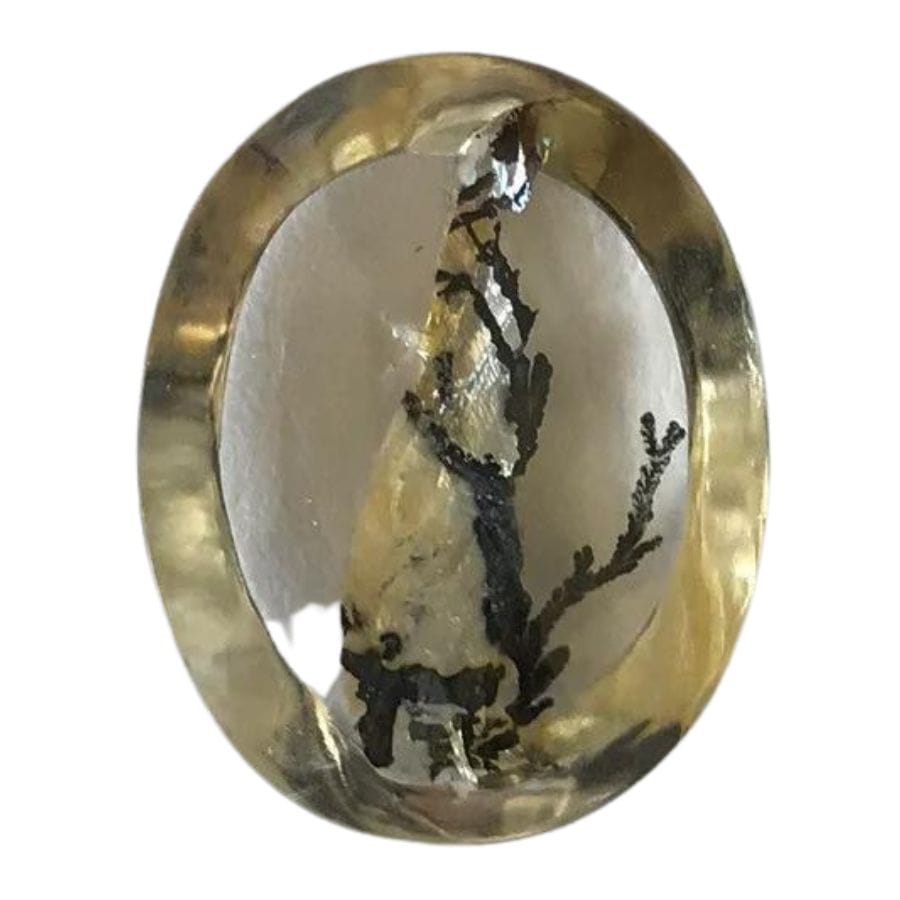
Some pieces of dendritic are opaque, which means you can’t see through them at all. They’re solid and block out the light. Other pieces might be translucent, so they let a bit of light in, and you might see blurry shapes behind them.
However, even the more translucent pieces are still quite foggy and not very clear.
Dendritic agate is a bit different. Some pieces are opaque. However, its translucent pieces can have higher clarity than translucent dendritic opal.
Thus, if you see a stone with dendritic patterns and a highly translucent base, it might be dendritic agate.

